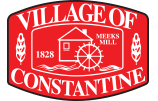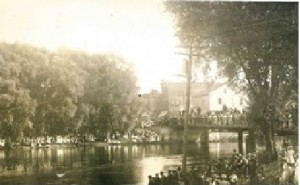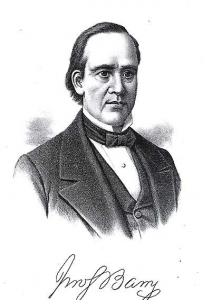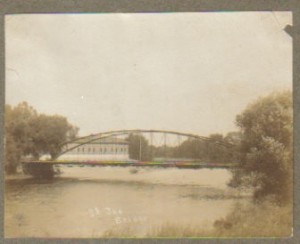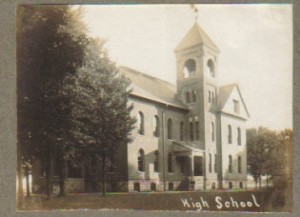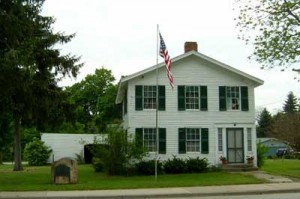Historic Downtown Constantine (by store)
This section is a history of selected retail endeavors on South Washington Street, Constantine, MI
WEST SIDE OF SOUTH WASHINGTON STREET
Hotel Harvey
100 South Washington Street
110 South Washington Street
116 South Washington Street
120 South Washington Street
124 South Washington Street
140 South Washington Street
150 South Washington Street
156 South Washington Street
164 South Washington Street
170 South Washington Street
176 South Washington Street
180 South Washington Street
182 South Washington Street
186 South Washington Street
194 South Washington Street
EAST SIDE OF SOUTH WASHINGTON STREET
105 South Washington Street
117 South Washington Street
119 South Washington Street
135 South Washington Street
137 South Washington Street
145 South Washington Street
149 South Washington Street
155/153 South Washington Street
161 South Washington Street
169 South Washington Street
177 South Washington Street
189 South Washington Street
197 South Washington Street
This concludes the Historic Downtown Constantine project. May 2023.
Early History
Originally known as Meeks Mills, Constantine was platted in 1831 and first incorporated as a village in 1837. The village of Constantine is located in Constantine Township, St. Joseph County, Michigan at the intersection of Fawn River (originally Crooked Creek) and the St. Joseph River.
William Meek, of Wayne County, Ohio, purchased land in Constantine in the summer of 1828 at the land office in Monroe, and built a log cabin on south bank of the St. Joseph River in the winter of 1828/29. This was the first cabin in this area. His family joined him in the summer of 1829. The following winter he began construction of a saw mill and the settlement was known as “Meeks Mill”.
Other early settlers were the families of Bonebright, Fitch, Arnold, Hamilton and Driggs. The first child born in the village was Henry Bonebright on February 3, 1930. The first marriage was that of Elliott Woods and Eliza Meeks in 1830.
In the fall of 1836 the Constantine North Addition Land Company was formed and raised its first building in November of that year. The Republican, a three months old newspaper, took a leading role in promoting the development of business. The paper was eloquent on the subject of water privileges and called for capitalists to establish such things as an oil mill, paper mill and blast furnace.
River trade was developed in 1839. The Hon. Joseph R. Williams started erecting a flour mill, buying his water power from Judge Meek. Joining him in this endeavor were George Howland of New Bedford, Massachusetts and Daniel Webster, the famous statesman and orator. These two gentlemen soon lost interest and withdrew from the milling business in Constantine. Mr. Williams began operation of his mill in 1841 with six run of stone.. He produced 25,000 barrels of flour yearly for many years and shared in the shipping trade with Governor Barry. In addition, he operated a large mercantile trade. In June 1856, the mill was maliciously destroyed by an incendiary which also badly damaged the dam. It was rebuilt by Miller, Hagenbuch and Harvey.
The steamboat business operated from 1843 to 1851 in Constantine, towing keel and flat boats from St. Joseph and returning to St. Joseph with light boats. In 1845, Governor Barry constructed a warehouse on piles over the river to allow steamers and other boats to load and unload directly to and from the warehouse. The warehouse was moved to the river bank in 1853 when the railroads came putting an end to river navigation.
One of the prominent political figures was Governor Barry who was chosen for three terms by Michigan voters. Governor John S. Barry and his son Charles operated the warehouse and a general store. Charles remained here until 1896. Mr. Cohn and William Watson took over these businesses after Charles retired.
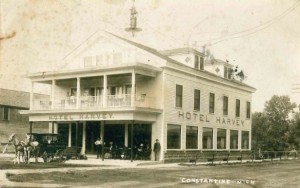
The Harvey House was built on this location in 1903 using the massive foundation of the Barry warehouse. The Barry residence remains as one of Constantine’s historic landmarks.
Trustees elected when Constantine as a result of the first incorporation in 1837 were the following: President , Dr. Watson Sumner; other trustees, Allen E. Massey, Willis T. House, James M. Hunt, Allen Goodridge, Pierrepont E. Grover and Erastus Thurber.
Albert Chandler was elected clerk. The first act of incorporation lapsed in 1839. In 1861 it was again incorporated with H. H. Riley elected president. Also elected were John H. Shipman, recorder; Ephraim H. Sheldon, treasurer; and Isaac T. Mozier and Cyrus Schellhous, assessors. Trustees were Almeron Bristol, Thomas C. Langley, John G. Miller, Levi T. Hull and Joseph Horton.
At this time industries in Constantine included sawmills, flour mills, foundries, implement works, woolen mills, furniture factories and a brewery. Because of the extent of industry, a movement was organized to improve the water power of the St. Joseph and Fawn Rivers. The company was organized in 1868 and the works was completed in 1873. The buildings covered more than 5,000 square feet. A substantial dam across the St. Joseph River and a raceway on each side of the river were also constructed. Later improvements were made on Fawn River.
Leading business were the Constantine Milling Company, the Board and Paper Company, the Constantine Casket Company which was established in 1895 and occupied the site of the Oliver plow works, Irwin Brothers sawmill and the Novelty Works.
The Bank of Constantine was chartered in 1836 with an authorized capital of $250,000. At the end of the first week that the stock books were opened, the full amount was subscribed plus 447 surplus shares. On February 24, 1837 the first installment of capital in specie was received and the doors opened for business on March 3, 1837. Due to hard times it was forced to close its doors in 1841. The First National Bank was organized in 1864 with E. H. Sheldon as president. It was reorganized in 1894 as First State Bank. George I. Crossett was elected president and W. W. Harvey as cashier. The Commercial State Bank of Constantine was organized in August 1894 with a capital of $25,000.
In 1910 Constantine was a town of about 1,000 people. As well as the industrial facilities, it boasted a public library, several banks, a comfortable hotel (the Harvey House), an opera house, a newspaper, a school, several churches and societies. It was a well built community located south of Three Rivers and ten miles southwest of Centreville.
The first school was in the basement of the Niles F. Smith store. This store was located on the south bank of the St. Joseph River in a frame building. Thomas Charlton taught about six students in the winter of 1830-31. A school was built on Broad Street in 1836 and had a lady teacher and ten pupils. The Union building contained the first high school of about 90 students in 1910. In addition to the high school, about 170 lower grade students also attended classes in the Union building. In addition to the regular classes, music and art were part of the curriculum. The high school had modern laboratory facilities as well as a gymnasium. J. Q. Roode served as superintendent of schools and Miss Anna Brady was high school principal.
Constantine boasted many bridges, the first of which was built on piles, with a swing in the center. It was rebuilt in 1841 and 1849 with a high curving arch, which allowed the passage of steamboats. This bridge was razed in 1852 at which time it was on a level with the second story of Barry’s warehouse.
The first iron suspension bridge was completed in August 1869. It represented the largest single span, iron-truss bridge located in the west. It was built by Simon DeGraff of New York at a cost of $15,000. On November 23, 1869 it fell into the river. The bridge was rebuilt and completed in April 1870 with a length of 231 feet. The next bridge constructed across the St. Joseph River began construction in September 1905 and was completed in May 1906.
A city water and light plant was erected in 1902 which furnished the city with water and electricity. The cost of the site and building was approximately $250,000 and the laying of transmission lines about $100,000. In 1910 the manager of the plant was L. J. Botting of Three Rivers.
By 1932 Constantine boasted two casket factories, a creamery (Constantine Butter) a paper board mill and power plants of the Michigan Gas and Electric.
Newspapers
The first newspaper originated in Centreville and was known as the St. Joseph County Advertiser. It was founded in February 1845 by Albert E. Massey and Horace Metcalf.
It started as a Whig newspaper and was published in Centreville until June 1851. Lee G. Hull and John M. Farquhar became the proprietors at that time and moved it to Constantine. It was published as the St. Joseph County Advertiser and Constantine Weekly Mercury until 1900. In August after its move to Constantine, Mr. Farquhar withdrew from the paper and Mr. Hull continued as publisher. Mr. Hull was known as the oldest newspaper publisher in the state in continuous service. The only interruption in the publishing of the paper was in March 1874 when the building burned and the paper was not published for a few weeks.
Mr. Hull was an influential Republican and held several offices. He was assistant assessor of internal revenue from September 1862 to May 1873. In August 1873 he was appointed collector of internal revenue and remained in that capacity until September 1876. In January 1877 he became deputy collector for the counties of Cass, Berrien, Van Buren and St. Joseph. He held this position for a number of years. In 1867 he was chosen as a member of the state constitutional convention. He founded the Items of Constantine in 1903 and remained as publisher until his death in 1907. After his passing, it was continued by F. W. and L. W. Hull as a weekly Republican newspaper.
The Constantine Record was started by Clayton W. and Earle R. Clemens May 11, 1897. It was consolidated with the St. Joseph County Advertiser in June 1900. In 1901, Earle R. Clemens withdrew from the paper. Clayton W. continued as editor and publisher.
Churches
Starting in 1830 church meetings were held in the old school building on Washington Street. The first such meetings were conducted by Methodist missionary, Erastus Felton and his colleague, Lyman B. Gurley. From 1839 to 1848, the Methodist services were held in the Presbyterian session house. In 1848 the Methodist congregation built their own church. Construction was begun in 1847 under the leadership of Rev. Richard Pengally, their first resident minister. In 1850 the church built a parsonage on Three Rivers Road which was occupied until 1855 when property was purchased on Pigeon Street.
From 1830 to 1847 the following served as ministers to the Methodist congregation: Erastus Felton, Lyman B. Gurley, Benjamin Cooper, William Sprague, R. S. Robinson, George M. Beswick, Newell E. Smith, Erastus Kellogg, Richard C. Meek, William Todd, John Ereanbrack, E. Arnold, J. V. Watson, William H. Sampson, Henry Hudson, Peter Sabin, Wellington H. Collins, Roswell Parker, A. J. Eldred, Franklin Gage and Richard Pengally.
During the following 30 years which passed between the building of the first and second church buildings, the following pastors served: Samuel A. Osborne, S. Blanchard, Peter Sharp, Elijah Crane, Frank W. May, Horace Hall, Thomas B. Granger, L. W. Earl, Benjamin F. Doughty, Stephen C. Woodward, David R. Latham, M. B. Camburn, David Thomas, A. N. Knappen, H. M. Parker, James A. Dayton, A. A. Dunton, S. George, S. George, S. M. Edmonds and George D. Lee.
The new (second) church was dedicated December 1, 1878. Rev. J. Boynton was called as pastor the following year. Succeeding him between 1879 and 1910 were William Prouty, J. B. Tallman, S.C. Strickland, S. C. Davis, J. G. Cozier, W. H. Parsons, J. B. Pinehard, Isaiah Wilson, J. C. Upton, B. H. Fleming, J. G. Bowerman and William Chapman. By 1910 the membership was about 200.
In 1836 six men and three women organized a Presbyterian Church in Constantine. The first pastor was Rev. P. W. Warriner of White Pigeon. The first church building was completed in 1854 and the first minister in this building was Rev. Samuel C. Logan. At that time the church in Constantine was the only one of this denomination in southern Michigan.
In 1888 the First Congregational Church was founded by members of the Presbyterian and Reformed societies and occupied this building. By 1910 the congregation numbered 125.
The Dutch Reformed Church in 1843 with Joseph Wells and John Sixbey as elders and Nicholas Sixbey and John Harrison as deacons. The formal organization was effected by Rev. Asa Bennett. The first services were held in the school house with their first house of worship completed in 1845. The Dutch Reformed Church later became known as The Reformed Church of America. In 1876 the interior of the church was remodeled and in 1876 a larger building was erected. Rev. Bennett’s successors were: David McNeish, William Bailey, J. W. Beardslee, Bastian Smith, S, L. Gamble, F. P. Baker, J. A. DeSpelder, J. I. Gulick, Edward Kelder, William Miedema, C. Vander Mel and becoming pastor in 1908.
Rev. Peter Bergstresser, pastor of the Mottville and Park Grove Evangelical Lutheran churches began a monthly ministry in Constantine. He organized the Messiah Evangelical Lutheran Church of Constantine on March 31 st with thirty-three charter members. The first services were held in the Dutch Reformed Church building with a rental fee of $2.00 per meeting. Rev. Bergstresser was succeeded by Rev. J. N. Barnett in the fall of 1867 as pastor of the Constantine, Mottville and White Pigeon congregations.
During this year, together with the German Reformed Church of White Pigeon, they bought the old Baptist Church building with joint occupancy. The Constantine Church was incorporated in March 1870. Land was purchased in the spring of 1872 on the corner of Canaris and Fifth Streets and a new building was completed in the fall of 1873. By 1910 they achieved a membership of 150.
Historic Citizens
Our village numbers many prominent men among the early pioneers. Foremost were Gov. John S. BARRY, Gov. John J. BAGLEY, Prof. Joseph R. WILLIAMS of M. A. C., Editor Levi T. HULL, Franklin WELLS for 30 years on the State Board of Agriculture, Judge E. W. KEIGHTLEY, Frank LINCOLN, the humorist, otherwise known as Gustavus U. HOPKINS, Judge Fredrick W. KNOWLEN, Brigadier-General Frank D. BALDWIN, Major Gen. H. H. BANDHOLTZ, Hon. H. H. RILEY who was a noted editor, lawyer, author and historian
This history based on “History of St. Joseph County, 1827-1877”; “History of St. Joseph County, Michigan” by H. G. Cutler, and “St. Joseph County Historical Review and Business Guide.:
Compiled by Willa Parker Yoder, Secretary of the St. Joseph County Genealogical Society.
GOVERNOR JOHN S. BARRY HISTORICAL SOCIETY
The Governor John S. Barry Historical Society was established in 1944 for the purpose of collecting and preserving antiques, providing historical information, and maintaining the Governor John S. Barry museum, former home of Michigan’s third elected governor (1842-1850). John S. Barry came to Constantine in 1834, when Michigan was a territory. He built the first frame building in Constantine, opened a general store (where the Harvey Hotel now stands), was elected to the first State Senate, served as president pro-tem of the State Senate, and was a member of the first Constitutional Convention, helping to write Michigan’s first constitution. He later loaned the State money to build the first railroad between Marshall and Kalamazoo.
In 1972, the Constantine home of Governor John S. Barry became the first building in St. Joseph County to be added to the National Register of Historical Places. The building currently houses the Barry Society’s museum, which holds donated articles of historical interest, many dealing with pioneer and local early settlers. The museum has been used by several service organizations for events such as the Meek’s Mill Garden Club juried flower show and the 4 th of July. The Society opens the museum to the public for special occasions or by appointment.
Each year the society holds a chicken and barbeque ribs fundraiser. Membership dues are $10 per year and membership is open to the public. There are currently approximately 20 members from the village and surrounding area.
Meetings are at 7:00PM, the 3rd Tuesday of each month. The Society meets at the Barry House April-October and at the Constantine Township Library’s Michigan Room November-March.
For more information contact:
President- Kevin Mallo – 269-506-1575
Vice President – Brian Myers – 269-816-8251
Secretary – Angie Birdsall – 269-435-8546
Treasurer – Rita Bickle – 269-435-4415
